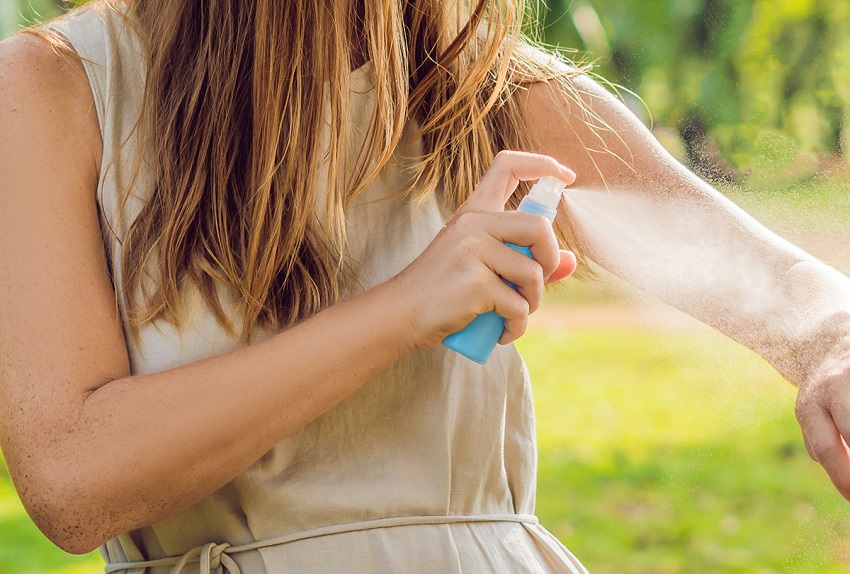Mosquitoes are pesky insects that not only cause irritating bites but also pose a significant health risk as carriers of diseases such as malaria, dengue fever, and Zika virus. Controlling mosquito populations is essential to protect ourselves and our communities. In this article, we will explore three common methods that effectively help control mosquitoes. This content is presented by https://yellovvkitty.com/
Remove Standing Water
Standing water serves as a breeding ground for mosquitoes. Female mosquitoes lay their eggs in stagnant water, which then hatch into larvae. By eliminating stagnant water sources, we can disrupt the mosquito life cycle and reduce their population.
Tip and Toss
Regularly inspecting your surroundings for any objects or areas that may collect water is one of the best mosquito control methods. Items such as buckets, flower pots, discarded tires, and birdbaths can accumulate water and become prime breeding spots for mosquitoes. Tip these containers over or remove them entirely to prevent water from accumulating.
Clean Gutters and Drains
Clogged gutters and drains can trap water, providing an ideal environment for mosquitoes to breed. Regularly clean your gutters and ensure that water can flow freely through them. Similarly, unclog any drains that might be obstructed, preventing water from pooling.
Cover Water Storage Containers
If you have water storage containers, such as barrels or tanks, make sure they are tightly covered with lids or screens. This prevents mosquitoes from accessing the water and laying their eggs. Additionally, check for any leaks or cracks in the containers that could lead to water accumulation.
Use Mosquito Repellents
Mosquito repellents are an effective way to protect yourself and your family from mosquito bites. They come in various forms, including lotions, sprays, creams, and wearable devices. When choosing a mosquito repellent, look for those that contain ingredients like DEET, picaridin, or oil of lemon eucalyptus.
Apply Repellents on Exposed Skin
When venturing outdoors, especially in areas where mosquitoes are prevalent, apply mosquito repellent on exposed skin surfaces. Pay attention to areas such as arms, legs, and neck. Follow the instructions on the repellent’s packaging for proper application and reapplication intervals.
Use Mosquito Nets
Mosquito nets provide an excellent physical barrier between you and mosquitoes, particularly when sleeping. Use nets that are specifically designed to keep mosquitoes out. Ensure that the nets are properly installed and do not have any holes or tears that mosquitoes can exploit.
Wear Protective Clothing
Another effective method is to wear clothing that covers your body, minimizing exposed skin. Opt for long-sleeved shirts, long pants, and socks when spending time outdoors, especially during dawn and dusk, when mosquito activity tends to be highest.
Employ Larvicides and Insecticides
Larvicides and insecticides are chemical substances that target mosquitoes at different stages of their life cycle. These products help reduce mosquito populations by killing larvae or adult mosquitoes.
Larvicides
Larvicides are specifically designed to kill mosquito larvae before they mature into adults. They are typically applied to bodies of water where mosquitoes breed, such as ponds, marshes, or even small containers. Follow the instructions provided with the larvicide and use it responsibly to avoid harming other organisms.
Insecticides
Insecticides are designed to kill adult mosquitoes. They come in various forms, including sprays, foggers, and coils. When using insecticides, it’s essential to choose those that are approved for mosquito control and follow the instructions carefully. Use them in outdoor areas or indoor spaces where mosquito activity is high.
Conclusion
Mosquito control is crucial for safeguarding our health and well-being. By implementing these three common methods—removing standing water, using mosquito repellents, and employing larvicides and insecticides—we can effectively reduce mosquito populations and minimize the risks they pose. Remember, it’s essential to adopt these methods consistently and responsibly to achieve long-term mosquito control.
FAQs
Q1: Are mosquito repellents safe to use?
Yes, mosquito repellents that are approved by regulatory authorities, such as the Environmental Protection Agency (EPA), are considered safe when used as directed. Follow the instructions provided on the packaging and avoid applying repellents on open wounds or near the eyes and mouth.
Q2: Can I make my own mosquito repellent?
While some natural ingredients may have mosquito-repelling properties, it’s important to note that their effectiveness and safety can vary. Commercially available repellents that have undergone testing and regulation are generally more reliable and recommended.
Q3: How often should I apply mosquito repellent?
The frequency of reapplication depends on the specific product and its concentration. Follow the instructions on the product’s label, as recommended reapplication intervals can vary. Generally, it’s advisable to reapply repellents every few hours, especially if you are sweating or in water.
Q4: Can mosquito nets prevent other insects from entering?
Mosquito nets are primarily designed to keep mosquitoes out, but they can also prevent other flying insects, such as flies and gnats, from entering. However, for complete protection against smaller insects, it’s best to use fine-meshed nets or screens.
Q5: Do insecticides harm beneficial insects?
Some insecticides may have an impact on beneficial insects if used indiscriminately or in excessive amounts. It’s crucial to choose insecticides that specifically target mosquitoes and follow the instructions carefully to minimize the impact on non-target organisms.





